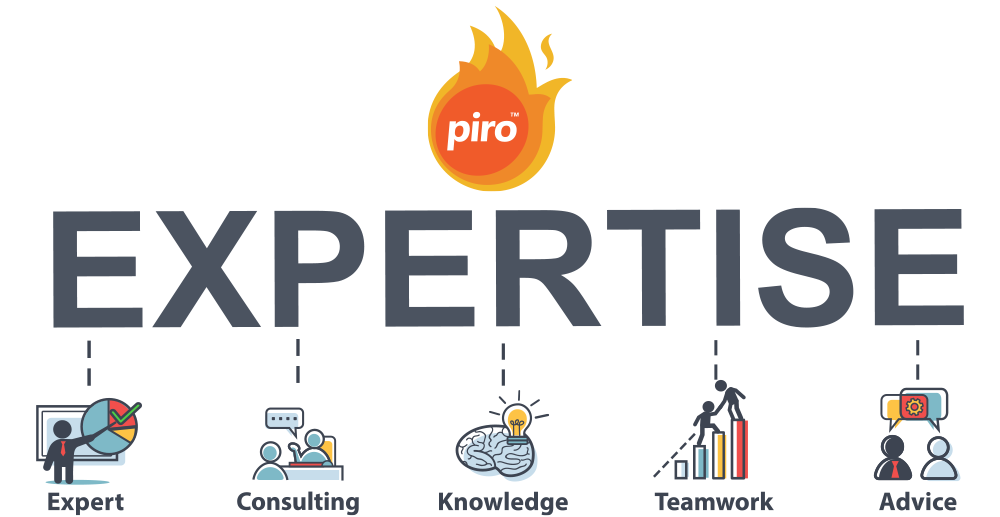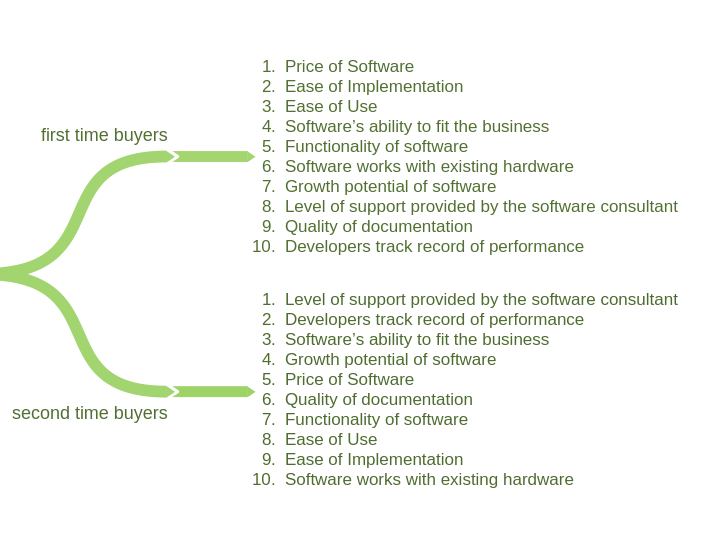Today’s blog is about software implementation as this topic proves to be essential for jewelry companies that are implementing a management system for the first time or planning to replace their legacy system. You will get an insight on why implementing a jewelry software requires expertise and how a project manager can help with the implementation.
As implementing a jewelry software is lot more complex than configuring a QuickBooks software or installing an Office package, your approach towards the project should be radically different.
Since there is limited information on the web about this topic, today’s blog is entirely based on our own experience, hopefully it will help you succeed with the implementation.
So let’s start.

Often when new clients, especially first time buyers, decide to implement our software, the implementation process is a blind spot for them. They are not aware of what a software configuration really is or the effort that needs to be put into it. Can it be finished by the end of the month? Well, it depends of which month.
We often meet customers who are trying to spend the minimum amount possible on consultation and configuration fees. This is understandable but it’s also one of the biggest mistakes and I will explain why.
In our experience, the projects that began without the coordination of the vendor’s project manager failed during the very first stage. Like I’ve said, implementing an ERP system or jewelry management system is nothing like installing a Microsoft Office package. With an ERP project, installing the software is just 1% of the whole process. Installing the software – or creating an account, if you are dealing with a cloud-based system – comes with a blank database which you can start expanding and customizing with your own styles, pricing, workflows etc. Most business owners are not aware of the effort needed to ‘decorate the Christmas tree’.
And you know what? This is normal. This is very normal. My estimate is that 60-70% of jewelry companies don’t have any experience implementing a modern and complete jewelry management software. This lack of experience leads to the false assumption that the implementation can be done without an expert, however reality always proves the exact opposite, namely that companies should never cut out the implementation cost.
Research data shows that companies who are buying a software for the first time tend to put pricing and the ease of implementation at the top of the list. But the truth is there is no such thing as an effortless implementation, and this phase is a road full of challenges.

Diagram: Deloitte & Touche study
If you look at the chart above, you can see what second-time software buyers prefer. And it’s more realistic. This is the priority order first-time buyers should follow too. Look at the switch in positions for the ‘price’ and ‘ease of implementation’ items. If we look at this chart carefully, we can see that second-time buyers considered ‘software expertise’ to be the most essential factor, while the ‘price’ and implementation cost of the software to be less important. They have learned from previous projects that an easy implementation is not realistic and when it comes to the configuration, there are no shortcuts.
Why can’t you configure a management system without an expert?
Our potential clients sometimes ask: how could we reduce the configuration costs? They say: “Well, our configuration will be very simple, we have no data to import, we only work with a few styles.”
Well, let’s look at the chart again. Do you think second-time buyers are negotiating on the configuration fees? Not really. They are very aware that involving an expert would not only reduce the implementation time but it would also ensure that the final configuration works as expected.
Most of the Enterprise Resource Planning softwares have tutorials, user manuals, or other help materials. But these systems are very complex and typically consist of layers or modules that have been built on top each other. It is quite difficult to become an expert just by watching and reading tutorials. For most people, the layers of the software and the interaction between these layers is like understanding Einstein’s space-time theory.
For small and medium-sized jewelry businesses, the fact that software systems are already available for their size is a significant advantage. But to actually implement such a system it’s necessary to work with a software expert who is knowledgeable about the software and the industry.
An expert not only helps you configure the system but can also assist with correctly mapping your processes and highlighting aspects that otherwise would have been ignored. A project manager has the necessary experience to give you tips and suggestions on how to optimize any ineffective processes you may have.
Many times, new clients think of their processes as simple processes. For them, these are simple because they are part of their everyday routine. But when having to map these processes and create workflow charts, it’s when the true complexity of these processes is suddenly revealed. Workflow rules will redeem the human decision making and actions for all the repetitive tasks. That’s the goal, right?
Although these rules seem to be simple in real-life, getting the right automation formula into the system requires much attention.
Just to give you an example: diamond acquisition is a simple process, right? We need a diamond with different attributes, so we create a Purchase Order. But if we add a condition like creating a Purchase order when the diamond inventory level falls under 2 pieces, or when creating new job order with that particular type of diamond, then our has just become much more complex.
Configuring these nuances and conditions definitely requires software expertise. If we would only like to implement a simple system that allows creating Purchase Orders, we can’t expect this system to be able to handle complex purchasing conditions. Only advanced systems can do that.
This a bit similar to catch 22, isn’t it? We would like to set up a complex workflow but we look for ways to do it simply. Let me tell you: there are no workarounds in such cases and it’s not worth picking the easiest way because later on you will end up being stuck with a semi-automated system.
It’s important to mention here that we are just talking about the complexity of the implementation. Once the configuration is done, using the software will be simple and easy. The whole concept of a jewelry management software is to simplify and automate complex processes for the end-user. Once all is set, the system will do the tracking of all repetitive tasks.
The setup might be complex, but the outcome is a simple action for the users and reduced human errors.
How will an experienced project manager help you?
Here at PIRO, all projects start with assigning a project manager. The project manager is the one who communicates with the client and coordinates the implementation, together with a team of colleagues with different expertise.
First, the project manager communicates with the customer to define the main steps of the configuration. Our 12-step implementation plan covers all segments of the system, but some of these segments can be skipped if the company is not planning to implement certain modules or track certain processes. For example, not every company makes use of the manufacturing module of the system.
Secondly, information about the project is uploaded to a dedicated platform where the information can be reached by all parties at all times. This is particularly useful if the client’s project manager gets replaced at some point by someone else so the new project manager can easily catch up.
In each step, the project manager asks the client to provide certain information needed to move forward with the implementation.
Typically, the project managers and the client exchange information during online meetings. Meetings are scheduled once or twice a week. The project manager defines the short-term tasks and does the configuration of the system.
 From the client’s side, it is essential that the requested information is handed over to the project manager in a timely manner. Otherwise, the project could stagnate as the project manager will be missing the necessary information to move forward with the configuration. The client or the project manager designated by the client must be heavily involved in this configuration process. This ensures that the configuration is correct and finished ASAP.
From the client’s side, it is essential that the requested information is handed over to the project manager in a timely manner. Otherwise, the project could stagnate as the project manager will be missing the necessary information to move forward with the configuration. The client or the project manager designated by the client must be heavily involved in this configuration process. This ensures that the configuration is correct and finished ASAP.
Week by week, new parts of the system are configured and they require to be tested by the client to ensure that the software’s mechanisms automate the processes as expected by the client.
Skills required by the client’s project manager
 In some cases, companies work with jewelry consultants, but smaller companies tend to internally assign a project manager. We have also had some cases where the owner himself took the lead position as a project manager.
In some cases, companies work with jewelry consultants, but smaller companies tend to internally assign a project manager. We have also had some cases where the owner himself took the lead position as a project manager.
But what are the must-have skills and competencies of a project manager?
1. Experienced in the jewelry Industry
A project manager must have industry experience with the business’ processes and methodologies. Project managers with no industry experience may have a high-level theoretical understanding of how things operate, but normally almost everyone in the company should possess that knowledge anyway. When a project manager understands the inner-workings of an industry, fewer blind spots exist.
2. Ability for abstract thinking
It is vital for the project manager to have some IT background or at least to be able to think abstractly. Matching a real-life process with the software’s language requires this ability. It is important to be familiar with standard terms from both the jewelry and IT industries. For example, if the person designated as project manager is not familiar with API’s, it would be difficult for them to understand how the software integration with 3rd party systems would work.
3. Punctuality
If a project manager is late to meetings or misses deadlines, the project will suffer significant delays. There are certain tasks that need to be completed from week to week. The worst case scenario is when necessary information is not received by our project manager in time, thus delaying the configuration.
4. Organized
When our requests are communicated to the client, we don’t have any say in how the client’s project manager handles these requests. How does this person handle deadlines, priorities? Does he or she knows what information needs to be delivered before the next meeting? We can offer different tools to help the client’s project manager in getting organized, such as Basecamp or Slack. But it is up to the client on if and how they include these tools in their project management processes.
5. Has all the support and authorization from the top management
If the project manager is not supported or trusted enough by the client’s top management and department heads, they might not be able to handle the implementation project properly. If the information is being gathered slowly because other key-people within the organization are resisting the change, the project can slow down.
Everyone within the company should be aware that the person designated as project manager should be given support when needed. The software implementation cannot be done by a one-man army, it should rather be a team effort.
What documents are needed for the implementation?
Our project manager will always let you know in advance about the information needed for each step of the implementation. But there are some documents that are universally required and that you can work on even before the implementation begins.
- The first document is about your internal workflows. You should create workflow charts about the most important processes as this would greatly help us understand your configuration.
- The second document is related to the structure of your styles and products. How are your item types built up? Do you have unique SKU numbers for each product? Do you have multiple variants of the same style? What attributes your styles have on the category level? What formulas do you use for pricing? Is it market-based? Is it cost-based? Do you simply use a fixed price? These questions will come up regardless of whether you are planning to use our software or a different one.
- Creating the third document is very time consuming, but
it isnecessary. I’m talking about the entities that you plan on migrating to your new system. This data can include your clients, vendors, archived job orders or sales orders. This is particularly important as you will need to clean this data before importing it, in order to avoid having inaccurate information in your new system. The data import is not a long process by itself if the data is organized into the right structure. Our import tool can easily handle the data if it is structured according to our import sheets. Based on our experience, it’s a very common phenomenon that in many legacy systems the data is a mess or not well-structured, well-configured. In such cases we don’t even recommend migrating them into the new system, rather start fresh and build up the styles again. - Custom works and integrations. If you know that your project needs to be integrated with other systems, you should create detailed documentation about it. This would help the vendor give you an accurate cost estimation, as well as help them better understand the requirements. In the past, we have encountered a situation when the client only provided us a superficial description of a custom requirement and after developing it, it turned out that is wasn’t exactly what they were expecting. Incomplete documentation leads to a dead-end that we would definitely like to avoid in the future.
What are the main factors that could slow down the implementation?
I would like to talk a little bit about the main factors that could slow down the implementation. Even big software projects like Oracle, MS Dynamics, or SAP projects are often faced with delays and missed deadlines, therefore I find it important to look into the factors behind this issue.
- The first factor is unforeseen custom developments or integrations. The scope of the project can change during the implementation and that is one of the reasons why custom developments remain unforeseen before the start of the project. Clients may request some custom changes in the system in order to tailor certain processes for the company. These side projects may delay the go-live date by a few weeks.
- The second factor is when information is not provided in time or is not ready to be processed. The client’s project manager might not be working on the project full-time and can therefore have limited time to prepare the requested information. Sometimes data is delayed for weeks and even the whole project can be suspended during the peak period. If this happens, the originally established deadline cannot be met.
- Replacing the project manager is a risk too. It can happen that the original project manager leaves the company or is pulled from the project for one reason or another. There were a few precedents when the client’s project manager left and the project wasn’t immediately or properly handed over to a new project manager. In such cases, we could lose weeks until a new project manager catches up with the configuration process and the implementation can be resumed. The situation can get even worse if the new project manager decides on a different plan and wishes to reconfigure parts that have been already finished. In such cases the project deadline will be pushed back and will generate extra costs for the client, since the time already spent on the configuration is wasted.
- An unqualified project manager is one of the negative factors. It needs to be said that not everyone is qualified for this position. Even if the project manager is the best IT expert at your company, the project cannot work out well if they lack communication skills, is unorganized or lacks industry knowledge.
- The project manager does not get enough support from the company. As I’ve already mentioned, support from the top management is vital. But it is not enough. Other members within the company and key executives must also be involved and preferably excited about the project. The implementation is never a one-man job. The project manager might represent the company during the implementation process, but this doesn’t mean they should do everything alone. The knowledge is never concentrated within a single person, team members should help out when needed.
Summary
Starting this blog, I’ve written about why ERP’s cannot be configured without a software expert. Then I’ve described what the project manager can help you with during the implementation and what skills are required from the client’s project manager. I’ve given you a few tips about what documents must be prepared for the implementation and in the last part, I’ve highlighted the factors that could slow down the implementation.
Was this article useful? Share it on social media or leave us feedback.






